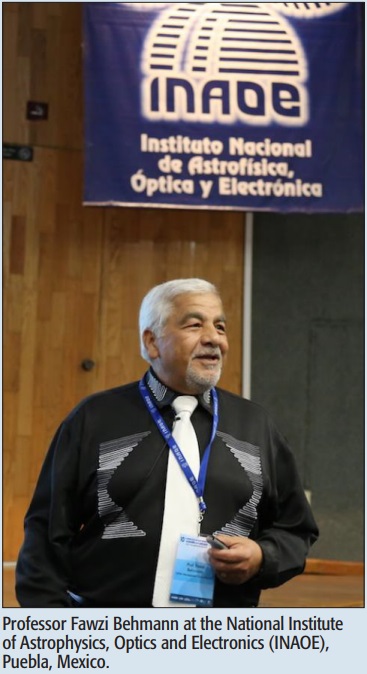
Regarding IEEE members, Mexico is the second biggest in Latin America, just below Brazil. With ten sections, over 3,000 members, and 13 Communications Society chapters, the Mexican sections are known to be excellent hosts of DLT ComSoc volunteers. Three Mexican chapters agreed to host Fawzi Behmann, a well-known and self-defined “visionary, thought leader, author, entrepreneur and contributor in advancing adoption of technology in serving humanity.” In his short biography, it is stated that “he spent over 30 years in industry and held various executive and leadership positions with Tier 1 companies in the areas of communications and networks spanning service provider with Teleglobe Canada, communications networking equipment with Nortel Networks and semiconductor with Motorola/Freescale in Canada and the US.” All these credentials made him a very listed DLT.

Behmann visited three ComSoc Chapters in Morelos, Cuernavaca city; Puebla, Puebla city; and Monterrey, Monterrey city. He delivered two keynote lectures: “Disruptive Internet of Things: Evolution, Applications Architecture and Future Trends” and “Developing IoT Solutions for Smart Homes/Buildings, Smart Cars and Smart Energy.”
On September 22, the day of his arrival, he visited Mexico City. The next day, he visited the magical town of Tlayacapan and the city of Cuernavaca. On September 24, he gave his first lecture on “Understanding Pre-IoT, IoT and Collaborative IoT (C-IoT) Model” at the National Institute of Electricity and Clean Energies (INEEL). After a general introduction to IoT and a broad vision on collaborative IoT, professor Fawzi focused on healthcare and wellness. He presented current and emerging solutions at hospitals, clinics, care centers and homes. He showed several examples of some of the related technologies such as 3D, robot, drone and wearables. Finally, the talk concluded with some of the factors and challenges to deliver scalable solutions, delivering better quality of services and experience.
On September 25, professor Behmann moved to Puebla. There, he participated as a Distinguished Lecturer in the “10th Seminar on Electronics and Advanced Design, 2018”, with the keynote lecture “Developing IoT Solutions for Smart Homes/Buildings, Smart Car and Smart Energy” at the National Institute of Astrophysics, Optics and Electronics (INAOE). The session was focused on smart homes/ buildings along with smart energy and smart cars exploring current and emerging solutions. The lecture covered architectural solution building blocks, including sensing, aggregation, and data analytics. Examples of some of the enabling technologies such as video surveillance, and drone were explored.
On the September 27 and 28 he gave the lectures: “Understanding Pre-IoT, IoT and Collaborative IoT (C-IoT) Model” and “Developing IoT Solutions for Smart Homes/Buildings, Smart Cars and Smart Energy” at the Technological and Higher Studies Institute of Monterrey (ITESM). Behmann challenged the public with a provocative question: Is there a common vision for IoT, 5G and Virtualization by 2020? The answer to the question could be found in his idea of disruptive Internet of things. The talks concluded with “some of the factors and challenges to deliver scalable solutions, delivering better quality of services and experience.” To get there, these include development platforms, 5G, virtualization and security